Competition is something desirable, no matter the industry you belong to. However, you’d want to use your competitors as teachers and as a means to grow and develop a better marketing strategy on LinkedIn.
To that end, you should learn how to start a LinkedIn competitor analysis, and how to keep improving this process until it yields useful insights.
So let's go over the steps need to complete a LinkedIn competior analysis and the benefits it provides.
How to develop your LinkedIn competitor analysis
What is a competitive analysis on LinkedIn?
Why is a LinkedIn competitor analysis so important?
How to conduct a competitive analysis on LinkedIn
What KPIs to monitor when analyzing LinkedIn competitors
Best LinkedIn marketing analysis tools
FAQs about LinkedIn competitor analysis
What is a competitive analysis on LinkedIn?
A competitor analysis on LinkedIn is the process through which you compare your LinkedIn performance with the one of your competitors. It's a way through which you look at your competitors and understand their strategy, campaigns, products, strengths and weaknesses compared to your own.
If you want, think of competitive analysis as a way of finding answers to some of these questions:
- Who's growing faster on LinkedIn?
- Is any of your competitors stepping up their engagement game?
- Are your competitors leveraging ads? If so, what do the creatives look like?
To keep your success in check and make sure your brand is on the right path, you should consider running a competitive analysis on LinkedIn every quarter and every year.
The insights you'll gather will be of much help for developing a better marketing strategy for your brand and better understand the requirements of your clients.
Why is a LinkedIn competitor analysis so important?
A comprehensive analysis of your competitors on LinkedIn can help you evaluate your performance, identify content trends, understand your audience's interests and create a better brand positioning strategy.
Here are a couple of reasons why running a LinkedIn competitive analysis is a smart move when looking for ways to improve your brand's content strategy.
Uncover your competitor's LinkedIn content strategies
It's important to pay attention to your competitors' LinkedIn marketing strategies, even if they make mistakes or have success stories to tell.
Take a close look at the type of content they use and how their audience engages with it. Observe how they interact with their followers and learn from their tactics.
To increase brand awareness and attract more leads, your content strategy should have a stronger baseline than your competitors. This will give you a competitive edge and help you stand out in the crowd.
Discover LinkedIn benchmarks
Analyzing your competitor's KPIs will help you gain a deeper understanding of your own metrics and of the market in general. This will further help you establish more accurate goals.
Starting from your most important metrics, such as engagement rate or followers' growth rate, you can uncover content performance trends that can help you better evaluate your current LinkedIn strategy.
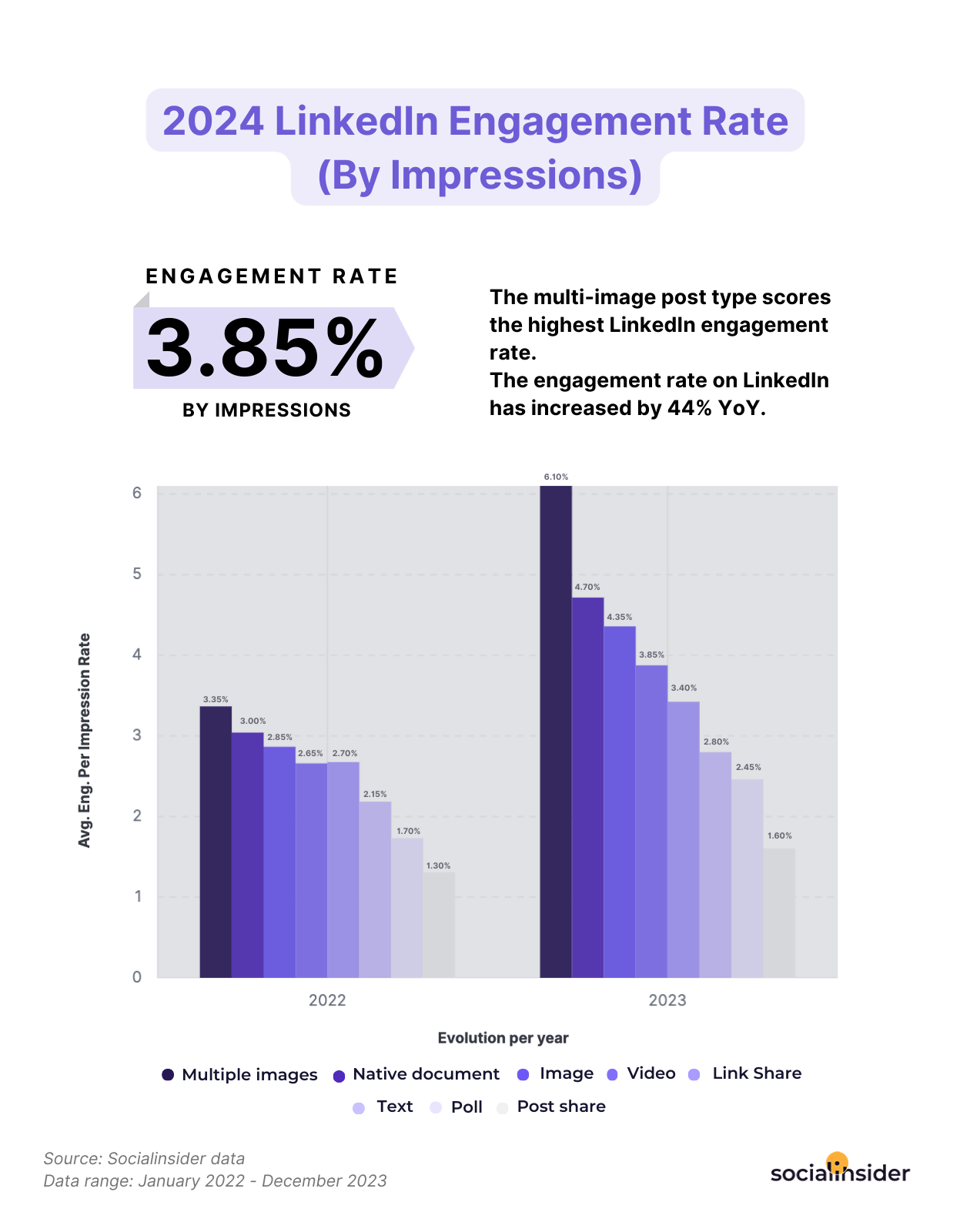
Get in-depth insights about how your industry is performing
To gain in-depth insights about your market, your LinkedIn competitor analysis should be segmented into two parts - one focused on your direct competitors and the other focused on other players, the ones that make your indirect competition.
Pay attention to the hashtags they use to follow relevant discussions and content related to your niche, so that you don't miss any important developments.
Keep a close eye on how brands in your industry are introducing new trends and take note of their content campaigns.
The sooner you learn what's working and what's not, the faster you can implement the changes in your strategy and improve your LinkedIn engagement metrics.
Keep up with the latest trends
A LinkedIn competitive analysis is not just about understanding the weaknesses or powerful points of your competitors, but also about discovering new trends on LinkedIn.
Here's how to collect data from your competition on LinkedIn to get trends for your page:
- track your competitors' content strategy
- tag and group LinkedIn content to spot industry trends
- analyze their visuals to understand how the audience reacted to specific messages
- monitor their hashtags and mentions
- track individual profiles, such as the C-level people from your competitors
- understand how fast your competitors respond to specific trends or campaigns
- analyze what influencers or SME are posting. Identify the trending hashtags with higher views/posts.
- pay attention to what their followers are reposting.
Gain deeper insights from LinkedIn's competitive analysis and analyze data within context.
How to conduct a LinkedIn competitive analysis
Now that we have broadly defined what a LinkedIn competitor analysis means, we can get started with the process.
#1. Establish the purpose of your research
First things first, you need to give your analysis a purpose to establish exactly what insights you want to retrieve at the end of your research.
Maybe you want to see what patterns your competitors follow when posting content, or maybe you want to debunk their marketing strategy based on their behavior.
You should also take a look at the way they interact with their clients and online community to learn some new tactics.
#2. Manually gather LinkedIn data from competitors
To gather LinkedIn metrics about your competitor’s followers and engagement, head to the native app's analytics section.
There, under the Competitors tab, you will find yourself among your competitors, and you'll be able to instantly spot any major differences in terms of followers:
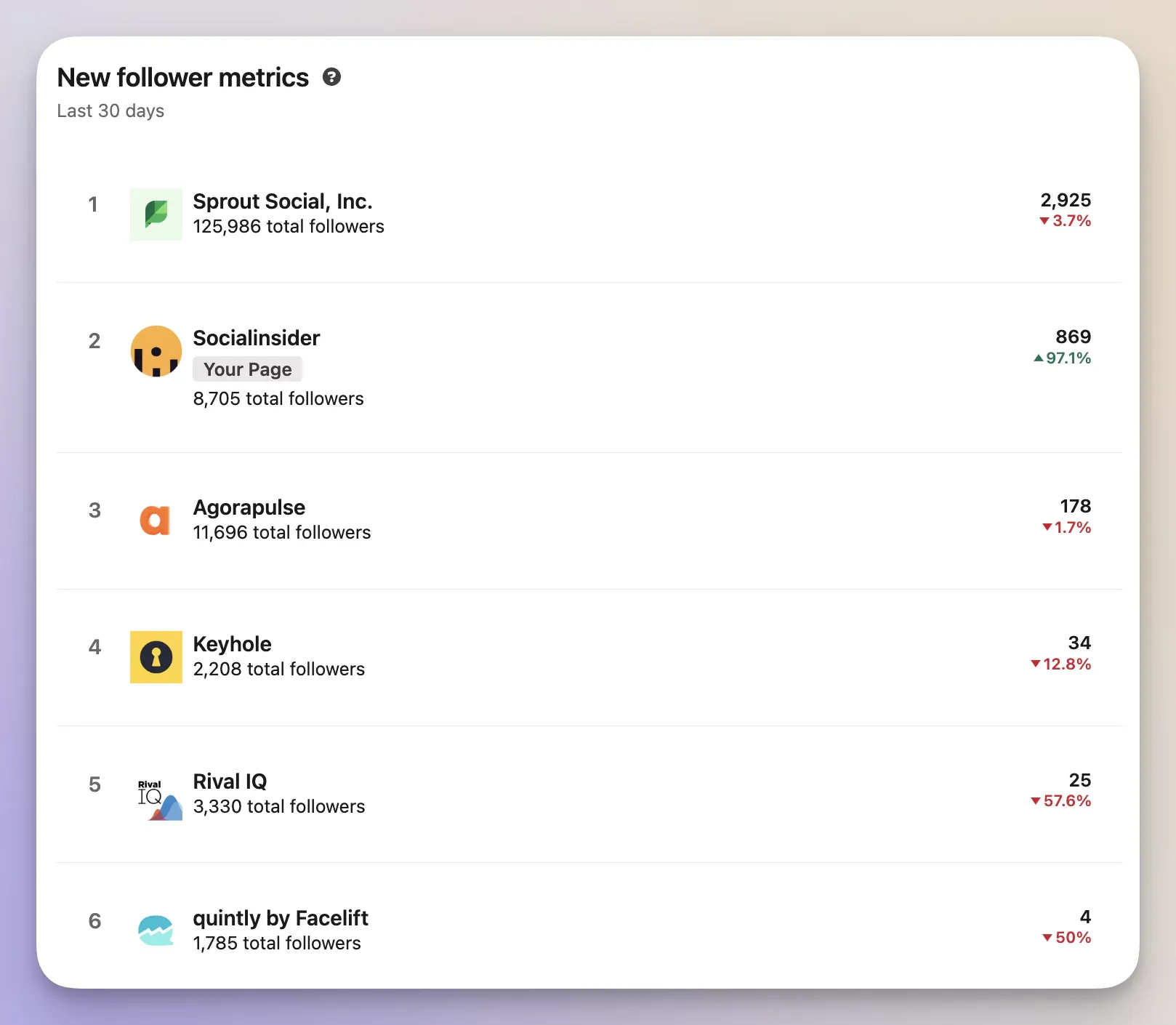
Or engagement:
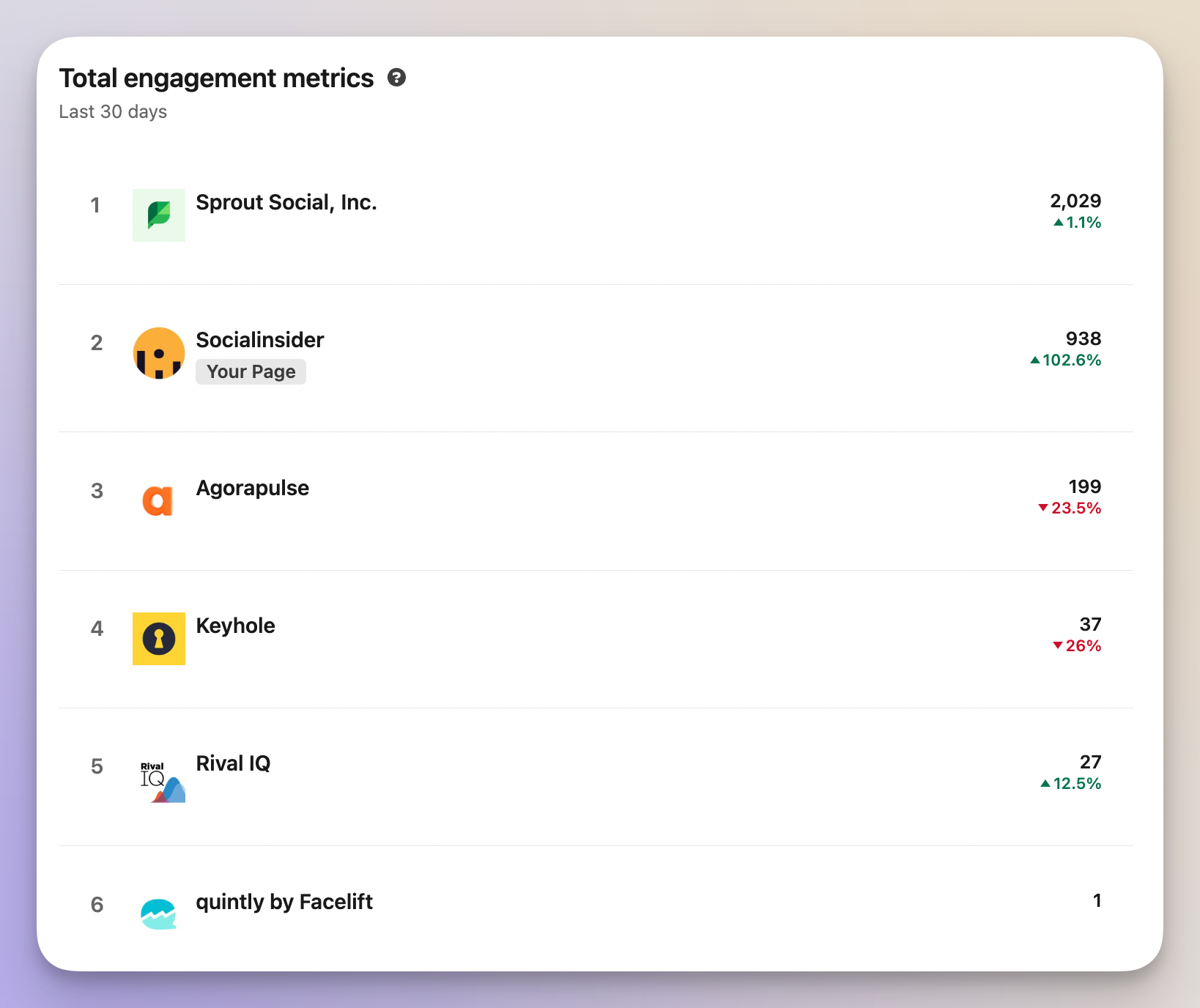
If you decide that you are going to do this without the native app's help, pick up a pen and paper or their digital equivalent: create a social media competitive analysis template. By the way, here's the template I created for Socialinsider's accounts.
First, you need to collect all the data from your competitors’ LinkedIn page.
Then check how many of their followers actually interact with their content. Now is the point for you to calculate the engagement rate.
Next, pay attention to how your competitors respond and interact with their followers.
Use all the data to develop a report that you will manually complete, using the insights you’ve discovered.
#3. Analyze your competitors’ content strategy
This part of your LinkedIn competitive analysis process requires you to pay attention to the hours your competitors post, the way they write their content, how they insert the keyword, the type of content they use the most. This data could inspire you to alter your brand’s strategy in a better direction.
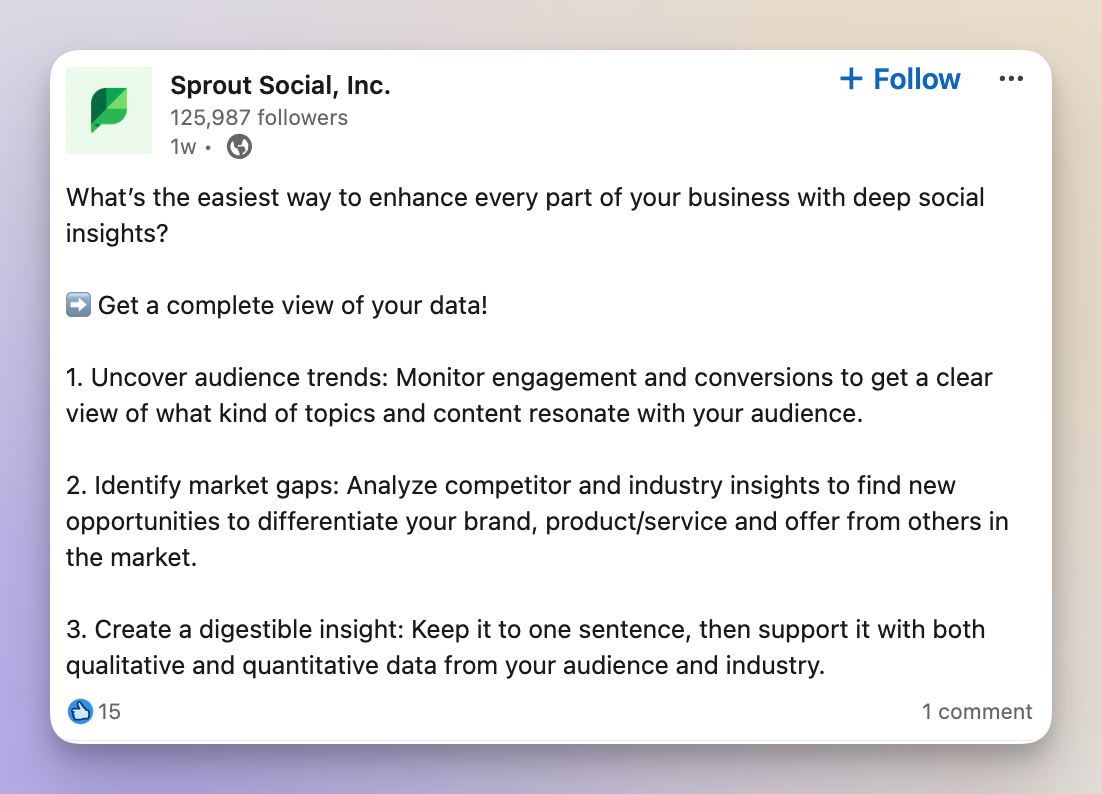
Another key aspect you should look at is related to hashtags. The hashtags they use for their LinkedIn content says a lot about the kind of users they manage to attract.
With those hashtags that work as keywords, a lot of LinkedIn users get to their content and, if they like it, they even interact with it.
Maybe you should explore the way hashtags work on LinkedIn too and learn how to efficiently use them for a constant evolution.
#4. Analyze your competitors' interactions on LinkedIn
Once in while, you should take a break from all the metrics and data, analyze the way your competitors interact with their prospective clients, leads and customers.
The way your rivals are interacting with their followers says a lot about their brand.
Try to learn from their mistakes and initiatives. Pay attention to the tone of voice they use and how fast they manage to answer customers’ queries.
#5. Look at your competitors’ ads performance
After using all of LinkedIn's features for competitive analysis, navigate to the ads section to access paid campaigns.
By analyzing your competitors' paid content, you can determine your focus. Targeting your ads towards your audience's interests can increase engagement rates.
Use social media analytics to see whether their paid posts reach more people than the organic content. Depending on your conclusion, you may have some changes to make to your LinkedIn strategy.
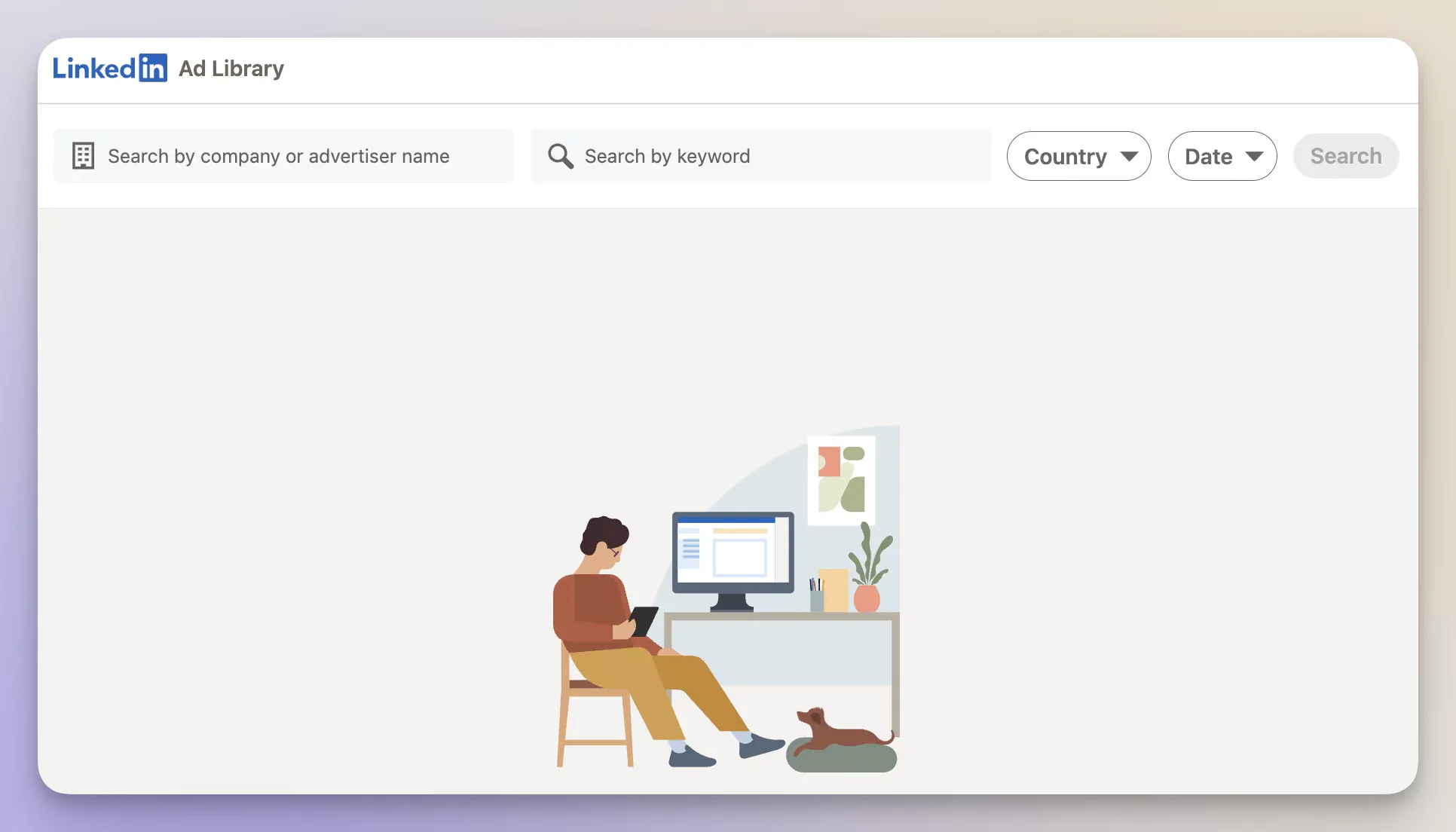
What KPIs to monitor when analyzing LinkedIn competitors
To gain powerful optimization insights based on your competitor's performance analysis, it's important to focus on the data that matters.
The most relevant KPIs that can help you identify your competitor's strongest and weakest strategy points usually consists of:
- follower growth;
- impressions;
- engagement and engagement rate.
Additionally, you can also dig deeper into data such as top posts to get content ideas you can leverage in the future.
Best LinkedIn marketing analysis tools
-
Socialinsider - great for LinkedIn analytics data
Socialinsider is one of the best LinkedIn analytics tools available on the market. With Socialinsider, you can effortlessly keep track of important social media metrics like engagement, impressions, post clicks, video views, and post-level analytics, among others.
Additionally, you can easily understand how your LinkedIn content is performing by tagging and grouping your posts into specific content pillars. This will give you valuable insights on how to improve your content and engagement on LinkedIn.
Socialinsider helps marketers identify which social media content pillars were the most successful across multiple social platforms, including LinkedIn, which is an important research pillar for competitive analysis.
Price: the standard package starts at $99/month.
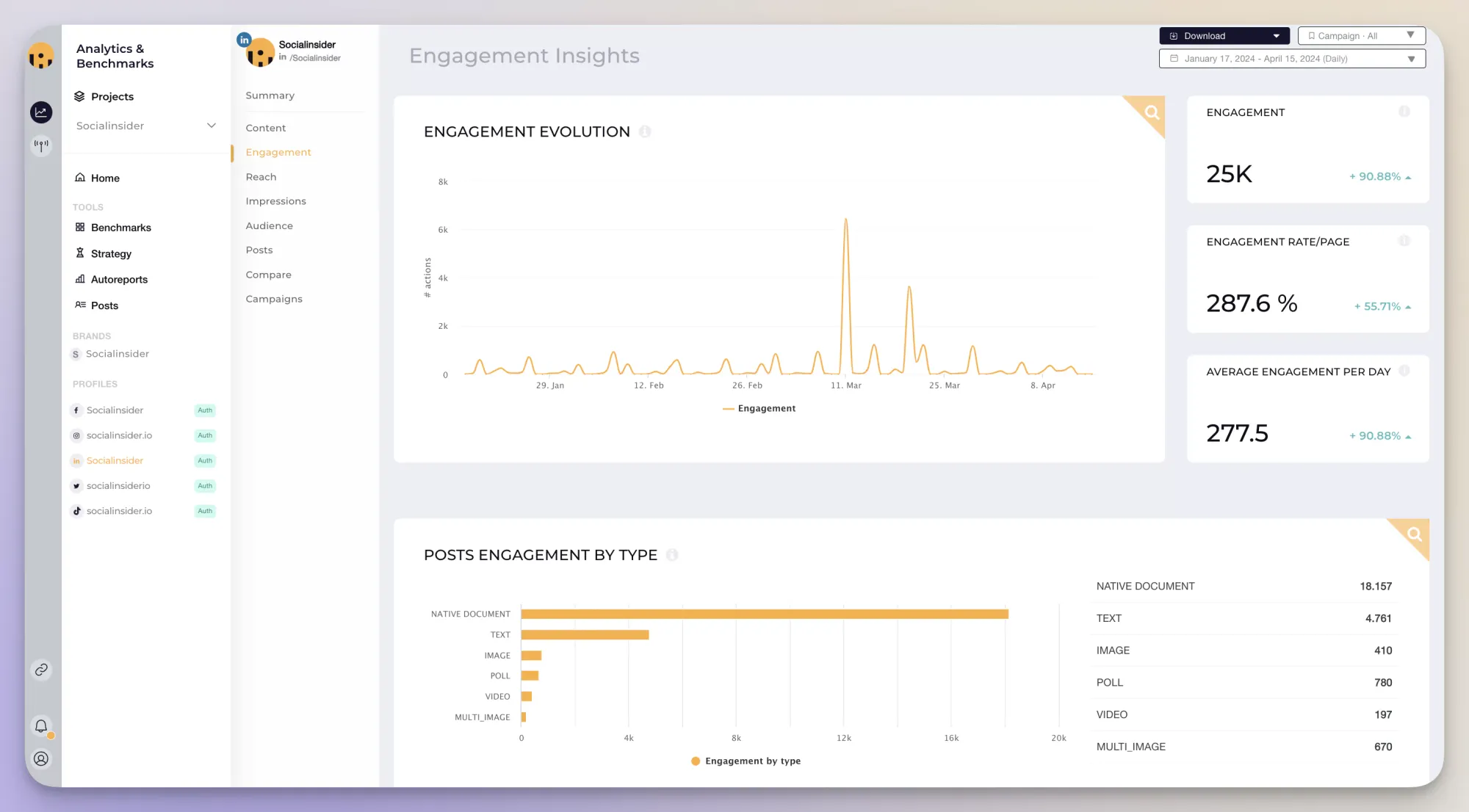
-
Sprout Social - great for employee advocacy programs on LinkedIn
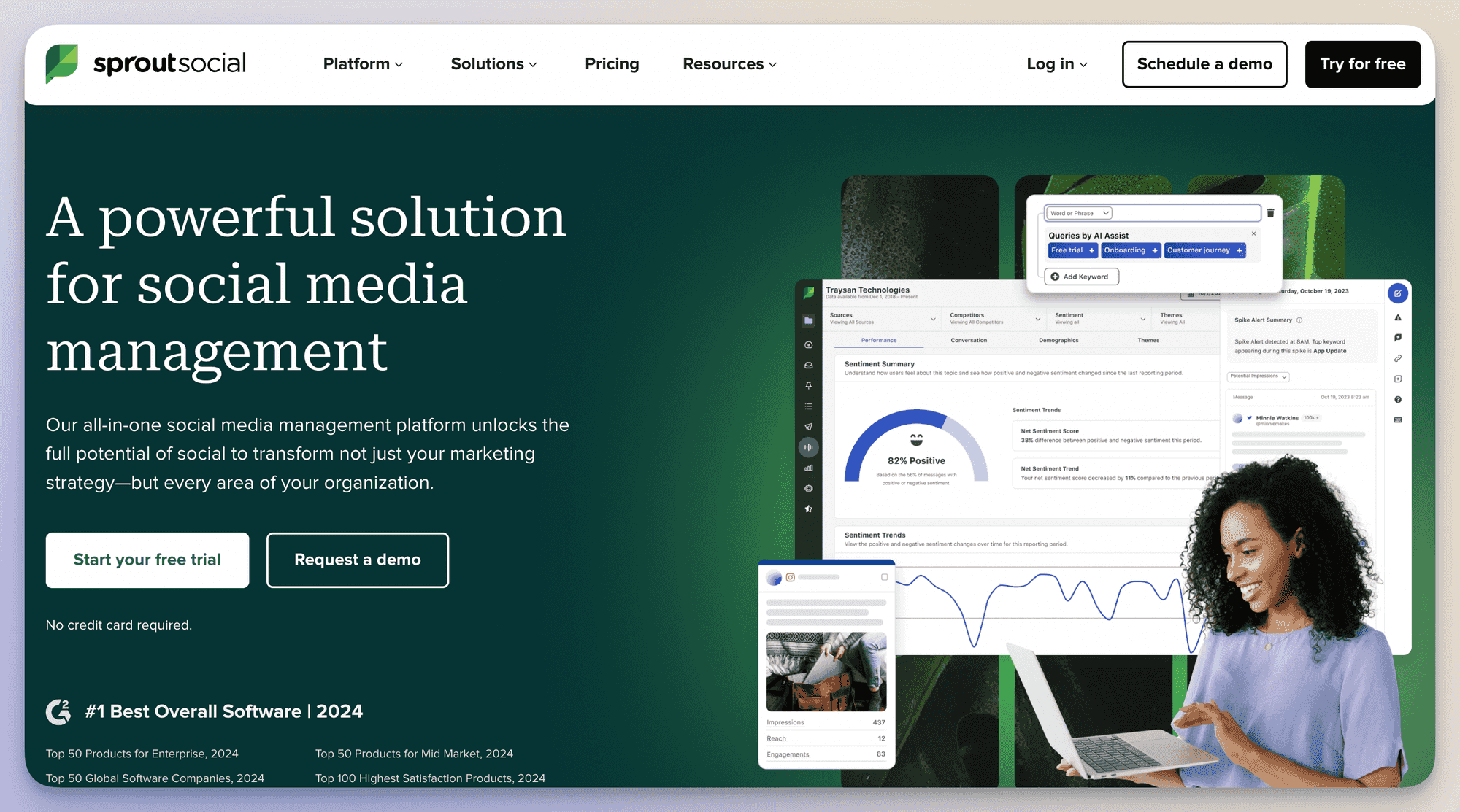
Sprout Social is one of the top social media management tools that allow marketers to capture social media insights with ease, allowing them to create in-depth tailored performance reports and create employee advocacy programs.
Price: the standard package starts at $199/month.
Final thoughts
A LinkedIn competitive analysis will have you winning not only a lot of experience with this social media platform, but also winning at your LinkedIn marketing game.
Learning what your competitors are doing and how they are handling their business is an opportunity for you to develop better content, better marketing strategies and better products to be one step ahead of them.
Hopefully this article on competitive analysis on LinkedIn is helpful enough for you to determine you to become better than the rest of the brands in your industry.
FAQs about LinkedIn competitor analysis
How often should you perform a LinkedIn competitor analysis?
Performing a competitor analysis on LinkedIn should be done regularly to stay up-to-date on your industry's latest trends and strategies.
The frequency of this analysis will vary depending on your business needs and the pace of change in your industry, but it is generally recommended to conduct one every month or when a significant event occurs.
How to monitor your competitor's brand reputation across LinkedIn?
By monitoring your competitor's mentions using a social listening tool you can discover what's the overall image and sentiment towards them within the LinkedIn environment. This can help you gain a competitive advantage, by capitalizing on your competitor's weaknesses, turning them into your strongest brand assets.







